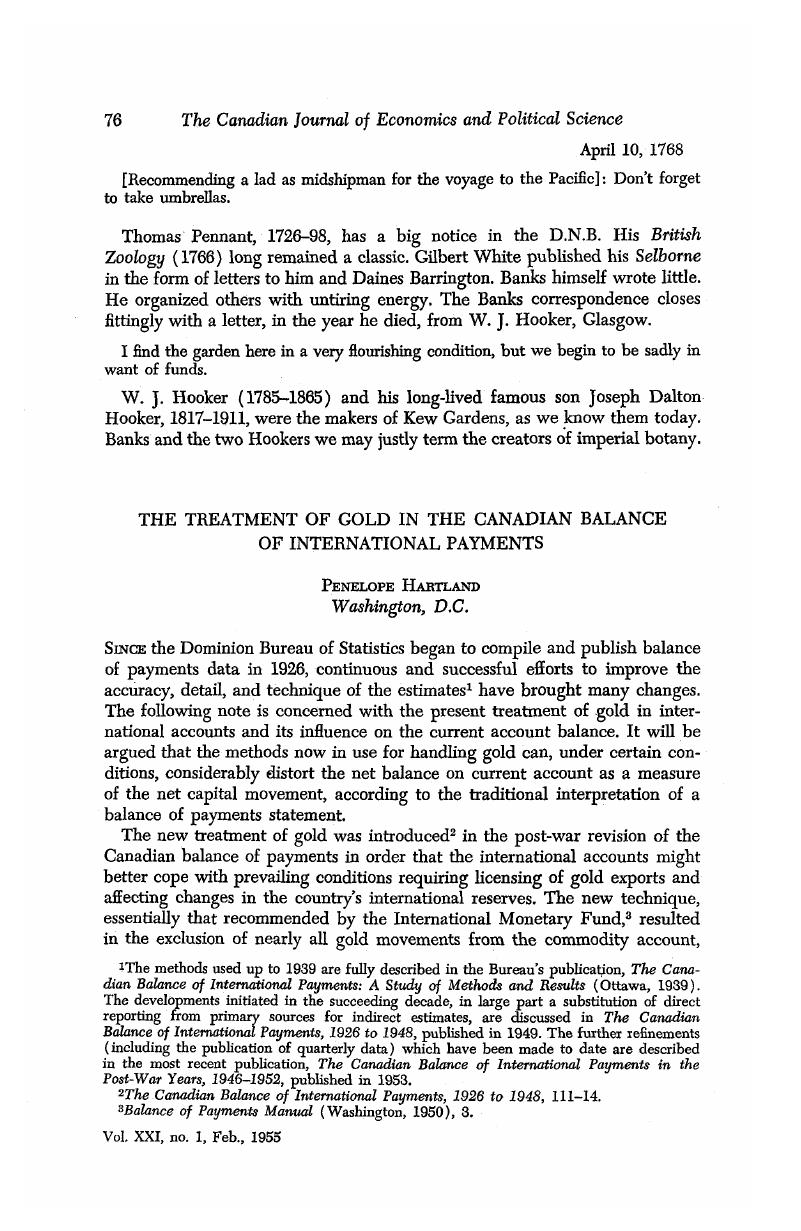No CrossRef data available.
Article contents
The Treatment of Gold in the Canadian Balance of International Payments
Published online by Cambridge University Press: 07 November 2014
Abstract

- Type
- Notes and Memoranda
- Information
- Canadian Journal of Economics and Political Science/Revue canadienne de economiques et science politique , Volume 21 , Issue 1 , February 1955 , pp. 76 - 80
- Copyright
- Copyright © Canadian Political Science Association 1955
References
1 The methods used up to 1939 are fully described in the Bureau's publication, The Canadian Balance of International Payments: A Study of Methods and Results (Ottawa, 1939).Google Scholar The developments initiated in the succeeding decade, in large part a substitution of direct reporting from primary sources for indirect estimates, are discussed in The Canadian Balance of International Payments, 1926 to 1948, published in 1949. The further refinements (including the publication of quarterly data) which have been made to date are described in the most recent publication, The Canadian Balance of International Payments in the Post-War Years, 1946–1952, published in 1953.
2 The Canadian Balance of International Payments, 1926 to 1948, 111–14.
3 Balance of Payments Manual (Washington, 1950), 3.Google Scholar
4 The Canadian Balance of International Payments, 1926 to 1948, 154, 158.
5 Ibid., 163, 168.
6 The Canadian Balance of International Payments (1939), 60–1.Google Scholar
7 The Canadian Balance of International Payments in the Post-War Years, 72.
8 Ibid.
9 Ibid.
10 The United States balance of payments, in its application of this technique, includes a reconciling table showing the net movements of gold between the United States and foreign countries. U.S., Department of Commerce, Balance of Payments of the United States, 1949–1951 (Supplement to the Survey of Current Business, 1952), 160.Google Scholar
1l Since gold and dollars are freely convertible in international trade, it is unimportant whether international balances are settled in the one or the other, or whether a country's reserves are composed of gold or dollars. A change in the composition of reserves (e.g., from dollars to gold) with no change in their total would have no effect on the balance of payments; only a change in the total is significant. Where foreign trade in gold is referred to in the text, “and/or dollars” should always be understood. Since the pound sterling is not freely convertible into gold or dollars, Canadian official holdings of sterling are not included, either in the discussion of official reserves or in the arithmetic adjustments in Table I. In those cases where gold or convertible exchange has been received from the United Kingdom in settlement of their Canadian accounts, official reserves of gold and dollars report the import and thereby take account of its effect. See The Canadian Balance of International Payments, 1926 to 1948, 112–13.
12 In the balance of payments tables in the most recent analytical publication (The Canadian Balance of International Payments in the Post-War Years, 90), the item, “net changes in reserves of gold and dollars,” is removed from the capital account, and with a changed sign is treated as the balancing item, equal to the difference between the net current account and the net capital account excluding changes in official reserves. In using this source to determine the actual capital movement, therefore, the sign of the change in gold reserves must be reversed before it is added to the current account balance. The textual discussion of the treatment of gold in the same source, however, continues to describe an increase in reserves as appearing in the capital account as a debit item (ibid., 72).
13 Deducting gold production available for export of $163 million (ibid., 90) from the published debit balance of $227 million.
14 Of the aggregate increase of reserves of $694 million (Table I) $163 million (approximately) came from domestic production; hence the difference must have come from abroad. The difference indicates net imports of monetary and non-monetary gold combined. From the data as published it is impossible to separate the non-monetary from the monetary movements of “gold production available for export.”
15 E.g. Balance of Payments of the United States, 1949–1951, 113.


